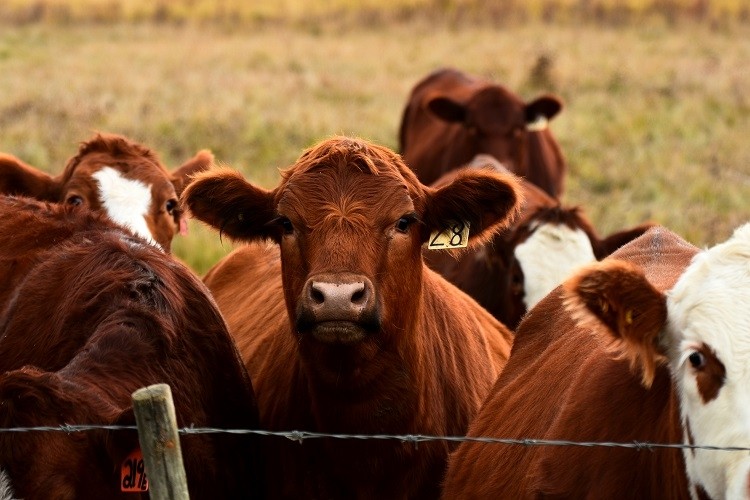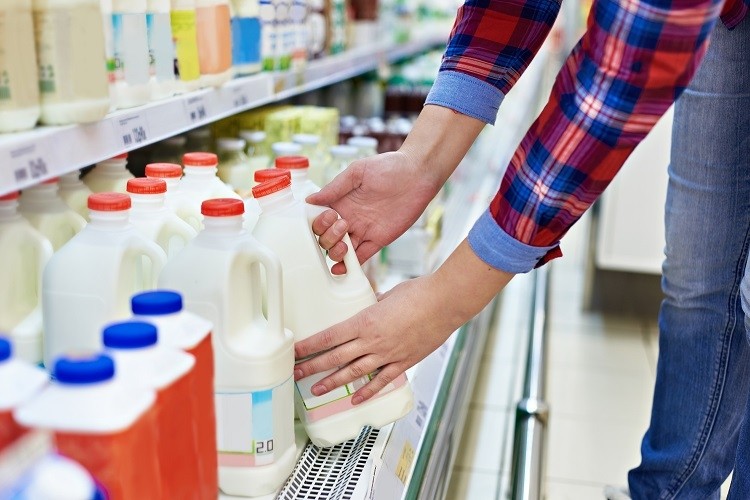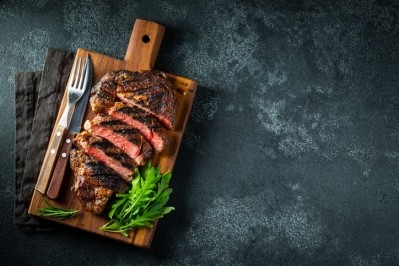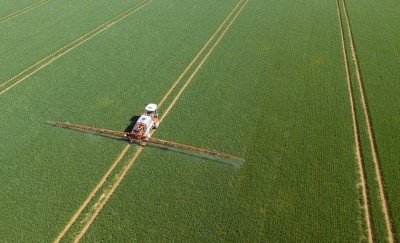How precision fermentation and cellular agriculture can help reduce emissions 90% by 2035

Time and time again, history has proven the power of technological disruptions. Well-known examples include the disruption of horses by automobiles, of film cameras by digital cameras, and of landlines by smartphones.
“History shows that disruptions tend to render previous technologies obsolete within just 10-15 years,” according to the new report ‘Rethinking Climate Change’ from think tank RethinkX, which argues that existing technologies could replace those currently employed across energy, transportation, and food sectors, in the not too distant future.
The outcome? RethinkX believes that such a transition could result in the elimination of more than 90% of net greenhouse gas (GHG) emissions by 2035.
The death of livestock and aquaculture industries
The eight disruptive technologies referenced by RethinkX include solar photovoltaics, onshore wind power, and lithium-ion batteries in the energy sector; and in transport, electric vehicles and autonomous electric vehicles – the latter which will lead onto transportation-as-a-service.
In the food sector, the think tank points to technologies set to disrupt meat, milk, and other animal products.
How can precision fermentation and cellular agriculture disrupt such well established industries? By their end products achieving price parity with animal products of all kind.
As noted in its 2020 report on precision fermentation in dairy, the research institute predicts the technology will make protein production five times cheaper by 2030 and 10 times cheaper by 2035 than existing animal proteins.
“The precision with which proteins and other complex organic molecules will be produced also means that foods made with them will be higher quality, safer, more consistent, and available in a far wider variety than the animal-derived products they replace,” explained the report authors.
“The impact of this disruption on industrial animal farming will be profound. The economic competitiveness of foods made with PF technology will be overwhelming.”
RethinkX predicts cow products to be the first to ‘feel the full force’ of the food disruption. And as a result, by 2030 the number of cows in the US are expected to have dropped by 50%. At this time, ‘the cattle farming industry will be all but bankrupt’.
“All other commercial livestock industries worldwide will quickly follow the same fate, as will commercial fisheries and aquaculture.”
Driving this disruption is RethinkX’s forecast that by replacing just a small percentage – 3.3% of a bottle of milk, for example – with precision fermented milk proteins could begin to collapse the whole of the cow milk industry.
“In some markets, only a small percentage of ingredients need to be replaced for an entire product to be disrupted,” the authors explained.
“Product after product that we extract from animals will be replaced by superior, cheaper, cleaner, and tastier alternatives, triggering a death spiral of increasing prices, decreasing demand, and reversing economies of scale for the livestock and seafood industries.”
Superior products produced on less land
Alongside precision fermentation and cellular agriculture, a new production model is emerging, according to RethinkX. Food-as-Software refers to ‘molecular cookbooks’ that food engineers can use to design products – just as a software developer might design an app.
Food-as-Software is founded on databases made up of individual molecules engineered by scientists. Ultimately, its aim is to ensure ‘constant iteration’, the think tank explained, so that ‘products improve rapidly’, with each version ‘superior and cheaper’ than the last.
“It also means that the precision fermentation and cellular agriculture food system will be decentralised and therefore much more stable and resilient than industrial animal agriculture, with fermentation farms located in or close to towns and cities just as breweries are today.”
Such food disruption is expected to free up 80% of land currently dedicated to animal agriculture (3.3bn hectares), which RethinkX argues will present an ‘entirely unprecedented’ opportunity for conservation, rewilding, and reforestation.
“Even without active reforestation, the passive reforestation of this land through the process of natural recovery will capture and store a quantity of carbon equivalent to up to 20% of today’s global emissions.”
11% of agri-food emissions could be eliminated by 2035
Comparing today’s greenhouse gas emissions associated with energy use, transportation, and food, the majority (56.7%) comes from the former – primarily in the form of CO₂ produced from the burning of fossil fuels.
Emissions from the food sector come next, at 18% of the global greenhouse gas footprint. These are largely in the form of methane and nitrous oxide. The least significant of the three is the transportation sector, which comprises a share of 16.2%.
Other sources outside these sectors account for 8.4% of emissions, meaning that more than 90% of global emissions are associated with energy use, transportation and, food – which RethinkX stressed are ‘poised for disruption’ over the next 15 years.
"Today, the global food sector accounts for about 18% of greenhouse gas emissions worldwide. Our research shows that the food disruption could directly eliminate 11% of emissions from animal agriculture by 2035, and indirectly eliminate another 20% of global emissions by 2035 as a result of reforestation on the land freed up from animal agriculture,” report co-author Adam Dorr told FoodNavigator.
“This enormous area of freed up land is 2.3 billion hectares, or the size of the United States, China, and Australia combined, and so the overall carbon withdrawal impact of reforestation is tremendous.”
Embracing, rather than resisting, change
How quickly disruption occurs – and consequently, how quickly greenhouse gas emission are reduced – depends on how willing societies are to embrace these technologies.
“Precision fermentation and cellular agriculture are emerging from the R&D phase and beginning to deploy to market today. That means government policy is needed to design efficient markets – with judicious use of regulations, standards, and mandates, including appropriate prohibitions on the older, dirtier, and less humane livestock and fisheries industries,” said Dorr.
Policy should also remove market barriers such as existing monopolies, and end subsidies and other protections for the ‘incumbent’ animal agriculture and fisheries industries, we were told.
“As in other disruptions, we can expect that the incumbent industries will resist disruption using every means at their disposal, although this will ultimately prove futile.
“Moreover, contrary to widespread belief, the early data (with examples such as the Impossible Burger) show that the majority of public worldwide is eager to adopt these new food technologies once the cost and quality reach parity with existing animal products – as we expect they will over the course of the 2020s.”



























